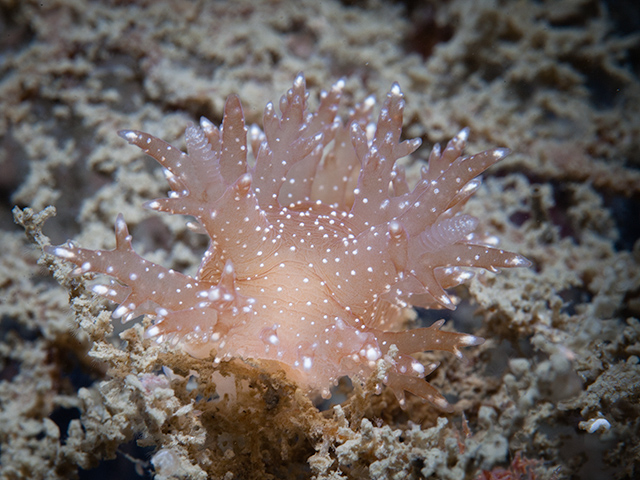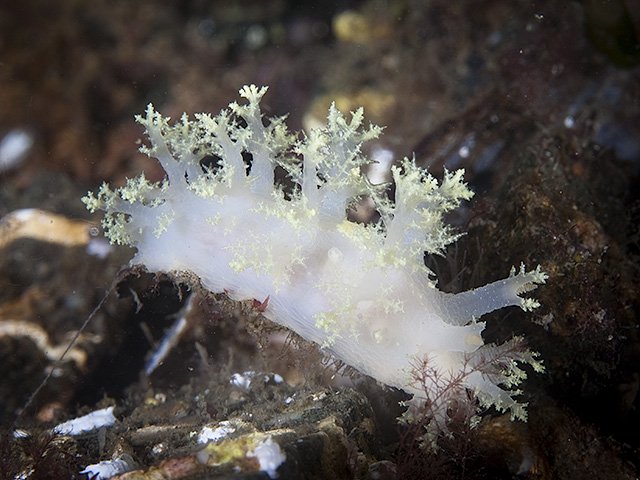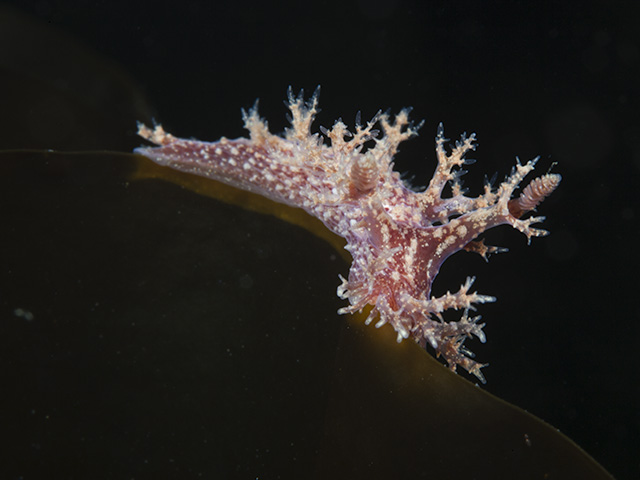For many years I was puzzled by the nudibranch, Dendronotus frondosus. In my early days of underwater photography, the literature stated that "all nudibranchs in Norwegian waters with heavily branched gills are D. frondosus. I always throw some shots at them with my camera, and was fascinated by the wide range of colors, size and body shapes that I found. I have learned that one should be careful when identifying species from their exteriors alone. Many have done that mistake before me, and that is why modern genetic studies have led to a massive rearrangement of the taxonomy of marine species during the recent decades. These studies require much resources and there is such a waste number of species out there, but finally the time has come to study the Dendronotus genus.
First a Swedish study, conducted by Thollesson (1999), showed that white and brown specimens from the same locations had different genes and that it was very unlikely that they were members of the same species. He suggested that the white specimens should be regarded as D. lacteus and the others as D. frondosus.
In 2015, Alexander Martynov et.al. presented a study specimens from a much wider geographical area. He concludes that color alone cannot be used for identification. He found indeed white D. frondosus from other parts of the Atlantic Ocean. He studied a lot of external features and correlated them to the genetic variations. After reading his paper and examining my old photos I also came across some photos of what is quite certain D. robustus. I have tried to summarize the differences in external features, observable from photos, of the three species:
- D. frondosus has between 6 and 12 lamellae on the rhinophores (organ on the top of the head, used to "smell" chemical compounds in the water). The gills are moderately branched, they usually have secondary, but sometimes even tertiary branches. The secondary and tertiary branches have rounded tips. Most specimens have pigmented spots or stripes. In the waters of Trøndelag, where many of the pictures on seawater.no is taken, specimens with a heavy reddish brown pigmentation seem to be common.
- D. lacteus has between 10 and 14 lamellae on the rhinophores. The gills tends to be more heavily branched. The tertiary branches are short. The tip of the secondary branches are shaped like spikes, in contrast to the rounded branches of D. frondosus. The color variation is as great as the D. frondosus, but white specimens seems to be common in Trøndelag waters. This seems similar to what Thollesson reported from Sweden.
- D. robustus has shorter, not so heavily branched gills, compared to the two species above. The flattened, not so slender body gives this species a more robust appearance. It is often heavily pigmented, making the body look reddish brown. White pigmented spots are scattered out over the entire body and tentacles. Close-ups will reveal fine wrinkles in the skin.


